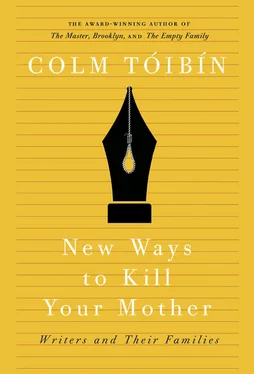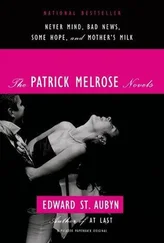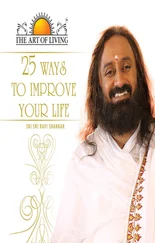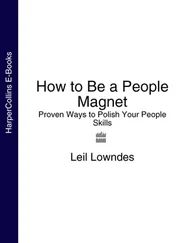His problem, as these ideas began to formulate in his mind, was his lack of worldly ambition. He wanted to be a musician. When his brother-in-law advised against it, his advice had not ‘the least effect’. His brother Robert, returned from Argentina and now a land agent, offered to take Synge into his office and train him up to become a land agent too. This did not meet with any enthusiasm. His cousin Mary Synge, who was a professional musician, came to stay and advised him to go to Germany to study music. His mother agreed to pay. At the end of July 1893 he left for Koblenz, where he lodged with a family of four sisters whose company he loved, as he loved the company of most women. He stayed in Germany for almost a year, coming home in time to join his mother and the rest of the family for their annual holiday in County Wicklow.
That summer he renewed an acquaintance with Cherrie Matheson, a neighbour in Kingstown who came to stay with the Synges in Wicklow. His falling in love with her served to emphasize his own marginal position in his class. He had no prospects, just as he had no religion. Nonetheless, he wanted to marry her as he returned to Germany in October. From there, in January 1895, he went to live in Paris, where he remained until the end of June, teaching English, attending lectures in the Sorbonne and idling with others of his kind in the city. That summer and winter in Dublin were filled with his obsession with Cherrie, whom he saw a great deal. At the beginning of 1896 he returned to Paris. ‘He had left the woman he idealised,’ Edward Stephens wrote, ‘and had refused to engage in any money-making occupation which might have enabled him to offer her a home. He was going to Paris and to Rome with a general plan for studying languages and literature, inspired by the hope of developing his own productive powers in a way which, as yet, he could picture but dimly.’ After three months in Rome, he wrote to Cherrie proposing marriage. When she refused, he wrote to his mother. Her diary entry reads: ‘I got a sad sad letter from my poor Johnnie.’ He returned to Ireland, and soon began to see Cherrie once more. She remembered:
Sometimes we went to the National Gallery or some picture exhibition, sometimes to sit for an hour in St Patrick’s Cathedral and just drink in the beauty of the dear old place… He liked that part of Dublin more than the modern part and especially Patrick’s Street, which runs between the two Cathedrals, and was then more like some queer continental street with little booths all down the centre of it.
Synge did not live long enough to reposition himself in a set of memoirs. It was clear, however, from his preface to The Playboy of the Western World that he would, had he lived, have easily joined Yeats, Lady Gregory, Sean O’Casey and many others in doing so. He wrote: ‘When I was writing “The Shadow of the Glen”, some years ago, I got more aid than any learning could have given me from a chink in the floor of the old Wicklow house where I was staying, that let me hear what was being said by the servant girls in the kitchen.’ This suggested that the girls were native Irish rural girls, proto-Pegeen Mikes. As Nicholas Grene has pointed out, they were ‘Ellen the cook and Florence Massey the maid, both of whom had been brought up in a Protestant orphanage and did not necessarily come from Wicklow at all’.
Yeats outlived Synge by thirty years; Lady Gregory by twenty-three, and they both created versions of him that suited them. In the years when the three of them worked together, there was also a strange hostility lurking in the shadows while centre stage stood solidarity, mutual support and kindness. It was as though both Yeats and Lady Gregory harboured the view that Synge was on the verge of finding them out as they shifted ground and reinvented themselves in the early years of the twentieth century.
There was also the issue of class. In his essay ‘Good Behaviour: Yeats, Synge and Anglo-Irish Etiquette’, Roy Foster pondered the relationship between Yeats and Synge when they first met in Paris in 1896, when Yeats was thirty-one and Synge twenty-five.
Yeats’s background was an important notch or two down that carefully defined ladder. Synge’s ancestors were bishops, while Yeats’s were rectors; Synge’s had established huge estates and mock castles, while Yeats’s drew the rent from small farms and lived in the Dublin suburbs. Yeats had no money, while Synge had a small private income. Yeats had no university education, whereas Synge had been to Trinity… Another important difference between them, which reflects upon background and education, is that Synge, for all his unpretentiousness, was really cosmopolitan; whereas Yeats when they met was desperately trying to be.
Yeats had had bohemianism foisted upon him by his feckless father; Synge had done it all alone as a new way of killing his mother. Yeats later described their first meeting:
He told me that he had been living in France and Germany, reading French and German literature, and that he wished to become a writer. He had, however, nothing to show but one or two poems and impressionistic essays, full of that morbidity that has its root in too much brooding over methods of expression, and ways of looking at life, which come, not out of life, but out of literature, images reflected from mirror to mirror… life had cast no light upon his writings. He had learned Irish years ago, but had begun to forget it, for the only literature that interested him was that conventional language of modern poetry which had begun to make us all weary… I said ‘Give up Paris. You will never create anything by reading Racine, and Arthur Symons will always be a better critic of French literature. Go to the Aran Islands. Live there as if you were one of the people themselves; express a life that has never found expression.’
Yeats wrote this account of their Paris conversations in 1905, claiming that they had taken place six years earlier, whereas they had taken place nine years before, shortly after Yeats’s own first visit to the Aran Islands. Declan Kiberd in Synge and the Irish Language and Roy Foster, however, have pointed out more essential inaccuracies in what became, for many years, the standard account of Synge’s impulse to go to the islands. Synge, through his study of the Breton language and his meeting with the Celtic scholar Richard Best, had been taking an intense interest in Celtic Studies in Paris in any case, as Declan Kiberd has emphasized. He knew about the islands because his uncle had been a minister there. ‘Doubtless,’ Kiberd has written,
the advice from Yeats was an important factor in Synge’s decision; but the passionate studies in Breton culture must have awakened his enthusiasm for the Gaelic lore of his own country, to which he already held the key in his knowledge of the Irish language. It would be naïve to follow Greene and Stephens [David Greene and Edward Stephens, Synge’s biographers] in asserting that he went to Aran at Yeats’s suggestion. He was heading in that direction from the very beginning.
He wrote to his mother in Dublin about his new friends in Paris where he had returned, who included Yeats and Maud Gonne. (One of his friends later reported that ‘Synge gently hated Miss Gonne.’) He explained that he had become interested in socialism, which his mother thought ‘utter folly’. He became a member of the committee of Maud Gonne’s Irish League, but politics did not interest him as much as culture, and he resigned after a few months. In the summer of 1897, despite his cosmopolitanism and his new friends, he came back to Ireland so he could go to Wicklow on holiday with his mother.
That summer, as he became ill, his hair falling out and a lump developing on his neck, some of his family put it down to unrequited love. But it was the beginning of the Hodgkin’s disease that would kill him twelve years later. His mother wrote:
Читать дальше












